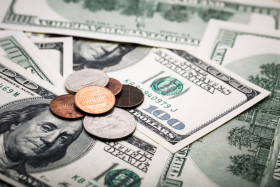
The US dollar is strengthening against other most-traded currencies midweek, possibly befuddling some passive investors after noticing a lot of recession talk trending across the online world. As the financial markets drown in an ocean of red ink and the primary measurement of the yield curve temporarily inverted, there is a fear that the US economy is on the cusp of slipping into a downturn.
The biggest story on Wednesday was the key gauge of the yield curve. This is when the yield on the 10-year Treasury note falls below the yield on the 2-year note. It is an important development because it suggests that investors are demanding more compensation to hold short-term bonds than long-term instruments, signaling that traders fear a risk of a bearish economic event.
Following weak Chinese and German economic data, the 10-year Treasury note slumped to as low as 1.574%, trading one basis point under the yield on the 2-year note. The inversion was only temporary, but it still spooked equities â the Dow Jones cratered nearly 800 points and the Nasdaq shed 250 points â because the inversion is considered one of the best signals of an upcoming recession.
Since 1965, nearly every time the yield curve turned negative a recession followed. The only time this did not happen was in 1990, though it did inch close to subzero territory. Many believe it is a strong indicator, but the idea does have its detractors. Critics say that the unconventional quantitative easing measures employed by central banks have eliminated the reliability of inversions as a forecasting tool. So, for instance, subzero bond yields in Europe and Japan have enabled investors desperate for a yield to turn to US markets, artificially suppressing long-term Treasury yields.
It might also hint that the bond market is anticipating the Federal Reserve to unleash an extended monetary easing cycle, which would inevitably send long-term Treasury yields underneath their short-term counterparts.
Even if this dip in the yield curve proved to be accurate, investors may not need to hit the sell button immediately. Why? On average, recessions have taken place more than a year after the inversion.
On the data, mortgage applications soared 21.7% in the week ending August 9, up from the previous weekâs 5.3%, according to the Mortgage Bankers Association (MBA). In July, import prices rose 0.2% and export prices edged up 0.2%, reports the Bureau of Labor Statistics (BLS).
The US Dollar Index climbed 0.2% to 98.01, lifting its year-to-date gains to just under 2%.
The USD/CAD currency pair spiked 0.72% to 1.3320, from an opening of 1.3223, at 18:56 GMT on Wednesday. The EUR/USD tumbled 0.29% to 1.1140, from an opening of 1.1173.
If you have any questions, comments, or opinions regarding the US Dollar, feel free to post them using the commentary form below.